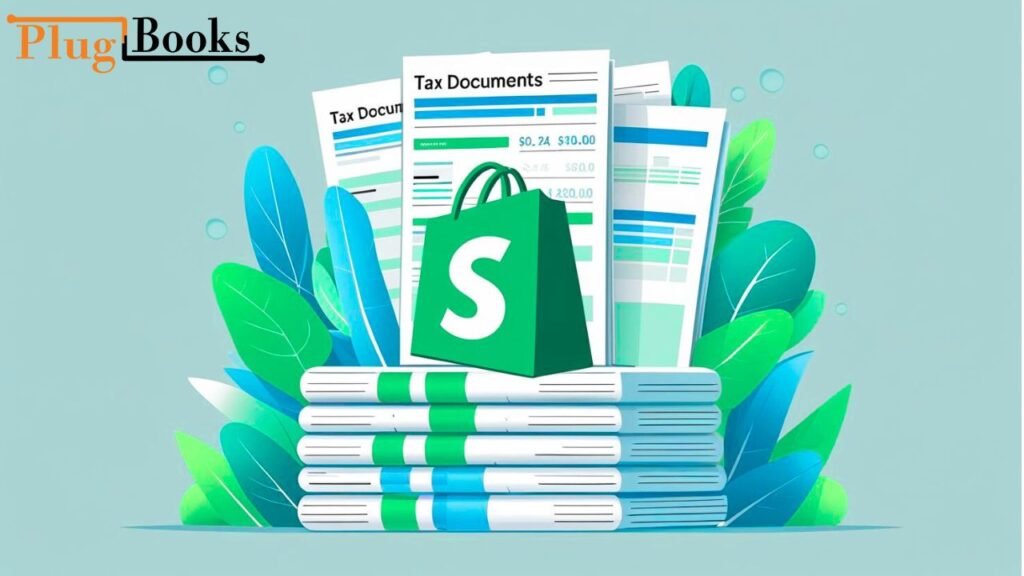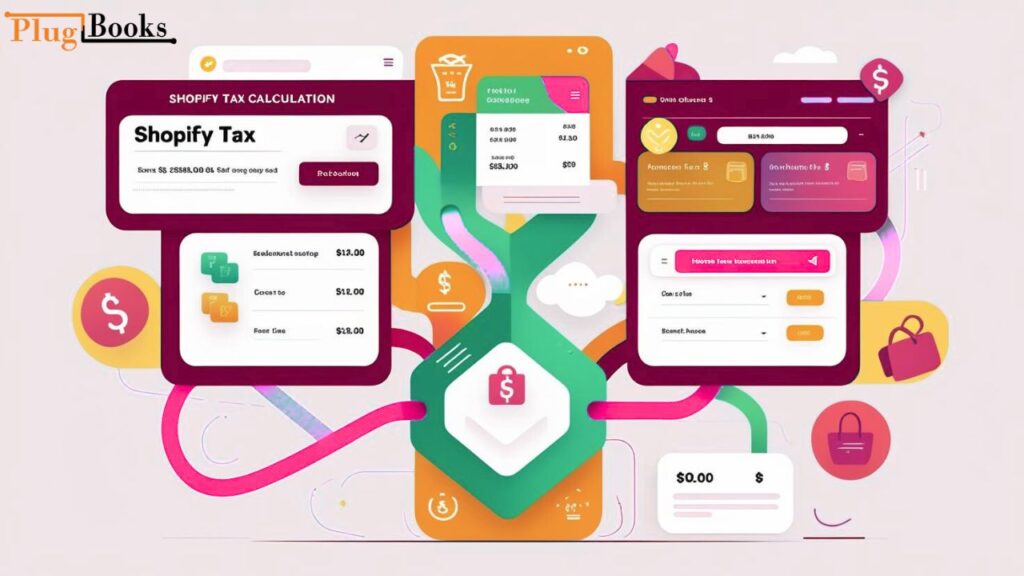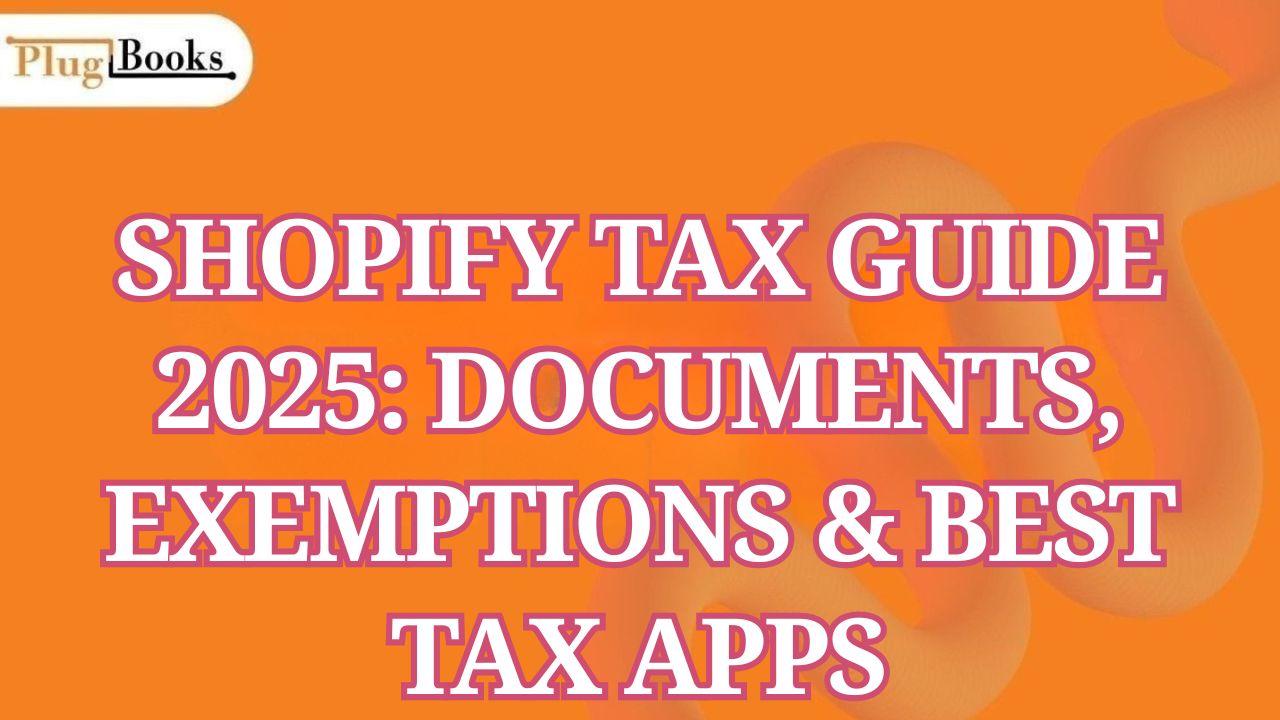If you own an online business, it’s not only beneficial to know about Shopify tax; it’s necessary. There are a lot of things to think about, such as collecting sales tax, filling out the necessary forms, and using the right apps.
This guide has everything you need to know about taxes for your business, whether you’re new to eCommerce or just want to make your tax setup easier. It includes tax paperwork, forms, exemptions, and the finest tax tools for your store.
🔑 Quick Keynotes
- Shopify tax isn’t automatically remitted — you must set up tax collection rules per region.
- You can download your tax documents from the admin dashboard or reports section.
- Third-party tools like PlugBooks and Shopify TaxJar help automate tax calculations and filings.
- Being tax exempt depends on your business type and tax laws in your area.
- The best Shopify tax app integrates with your accounting software and simplifies reporting.

What Are Shopify Taxes and How Do They Affect Your Online Store?
Shopify taxes comprise the collection, reporting, and remittance of sales tax for your transactions. The amount of these taxes changes depending on the country, state, and even the type of commodity. Unless you are tax-exempt on Shopify, you must collect state-specific sales tax from U.S. customers.
Knowing what your tax duties are helps you stay in compliance, avoid penalties, and gain your customers’ trust. Always check your tax paperwork 2025 to make sure they are up to date.
Where Can I Find My Shopify Tax Documents for Easy Filing?
It’s important to know where to find your tax records so you can keep organized. You may locate them in the “Finances” or “Reports” section of your store. These include monthly and yearly summaries that are great for filing at the end of the year or preparing your taxes every three months.
Make sure you download your tax paperwork 2025 ahead of time if you’re getting ready for your 2025 taxes. You’ll need them to make sure everything is correct and up to date.

How to Download and Understand Shopify Tax Forms Step-by-Step
The tax documents you get from Shopify show you exactly how much sales tax you collected in each area. People typically utilize these forms to file their state taxes or annual returns. You can export these from your Shopify dashboard in either CSV or PDF format. Make sure that all the numbers line up with your bookkeeping system.
Tools like TaxJar or PlugBooks sync your tax forms automatically. PlugBooks connects with QuickBooks and Xero for easier filing.
Is Your Business Eligible for Shopify Tax Exempt Status? Here’s What to Know
Some businesses, such wholesalers, non-profits, or government institutions, may be able to get Shopify tax exempt status. You’ll need to set up tax overrides and exemption certificates in your Shopify admin panel.
You should still make tax forms for proper recordkeeping, even if you’re tax-exempt. This is especially true for Shopify tax paperwork 2025 that auditors or your accountant may need.
Looking for Shopify Tax Documents 2024? Here’s Where and How to Get Them
After the tax year closes, your tax documents 2024 will be in your dashboard. These include summaries of sales, breakdowns by region, and tax forms that can be downloaded. Make careful to check this information against your accounting software and talk to a tax expert if you need to.
Keeping your Shopify tax paperwork up to date for 2024 can make audits go more smoothly and help you plan your money better.

How Does Shopify TaxJar Work and Is It Worth It for Automation?
TaxJar is a popular app used to automate sales tax calculations, filings, and compliance. It integrates directly with your store and tracks tax obligations in real time.
For businesses with high volume sales or complex tax regions, TaxJar can save hours of manual reporting. It also helps in generating accurate tax documents and tax forms, keeping your compliance sharp throughout 2025.
Which Shopify Tax App Is Best for Beginners and Small Businesses?
Choosing a reliable tax app is essential for calculating sales tax accurately and staying compliant. PlugBooks offers automatic sales tax calculations, exemption handling, and simple dashboards tailored for beginners and small businesses.
A great Shopify tax app like PlugBooks should:
- Be easy to install
- Integrate with QuickBooks or Xero
- Provide accurate sales tax rates
- Help generate your Shopify tax forms and documents 2025
PlugBooks stands out for its smooth integration with accounting tools and its ability to keep your tax data clean, organized, and audit-ready. Using the right app saves time, reduces errors, and makes sales tax filing much easier.

❓ Questions and Answers
1. Will Shopify automatically charge taxes for my store?
No, Shopify lets you set up rules, but you have to turn on tax collection by area yourself.
2. Where can I find my tax records from Shopify?
Reports > Taxes or Finances > Documents on your admin panel is where you may find them.
3. Is it possible for me to be tax-exempt on Shopify?
Yes, if your business fits the requirements (such being a wholesaler or a non-profit) and you send in appropriate exemption certificates.
4. What does Shopify TaxJar do?
It figures out, keeps track of, and even files your sales tax automatically based on where you sell.
5. Do I need a tax program for Shopify to handle taxes?
A Shopify tax app isn’t required, but it makes things easier and lowers the chance of mistakes.
6. What are the tax forms for Shopify used for?
These documents show how much tax was collected in each region and are necessary for filing with the state and the federal government.
7. How can PlugBooks help you keep track of your taxes?
PlugBooks connects your Shopify sales tax information to QuickBooks and Xero, which makes it quicker, faster, and more accurate to file your taxes.



